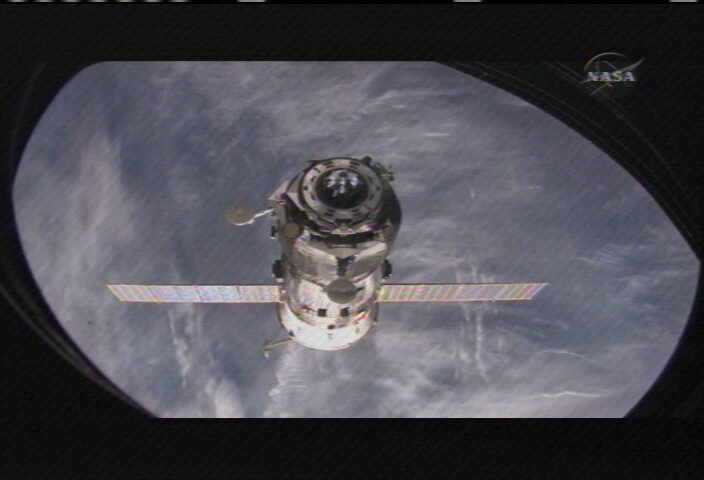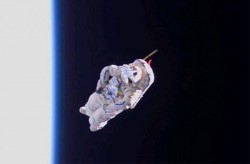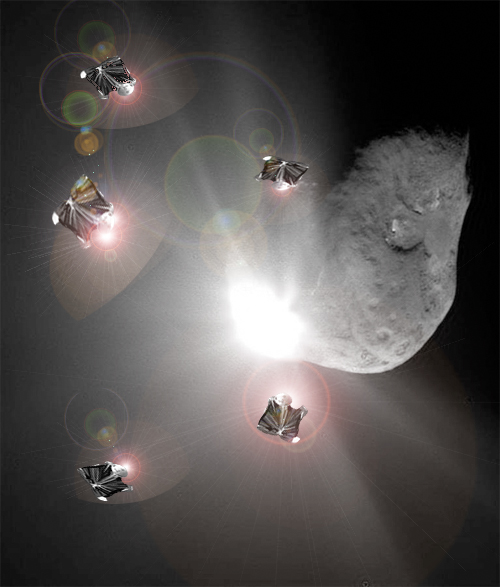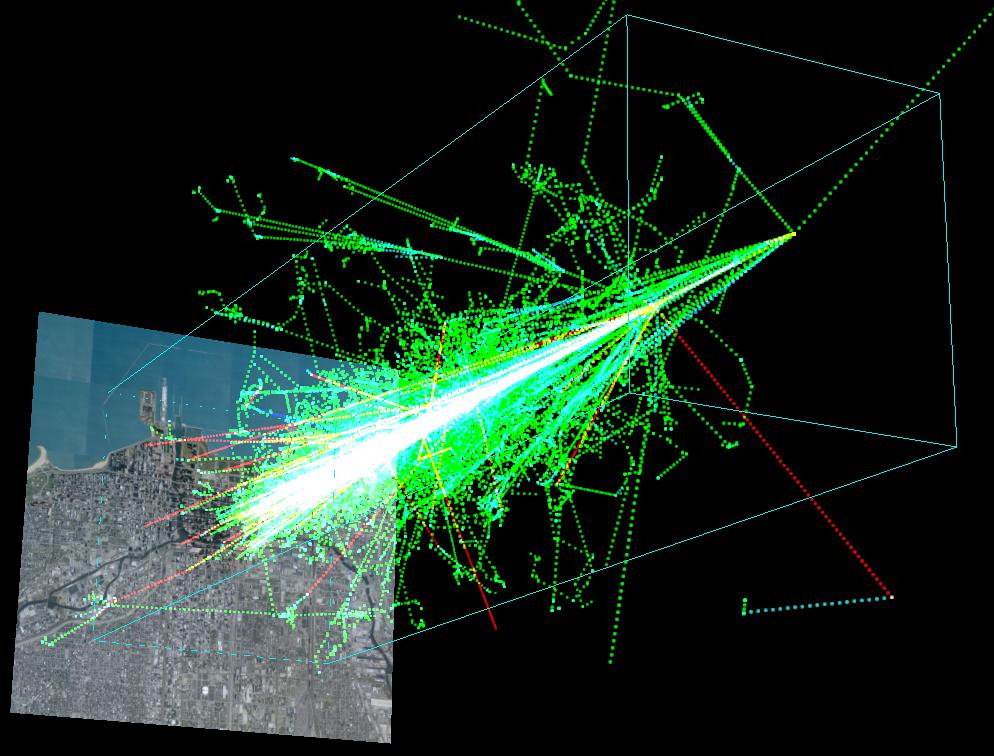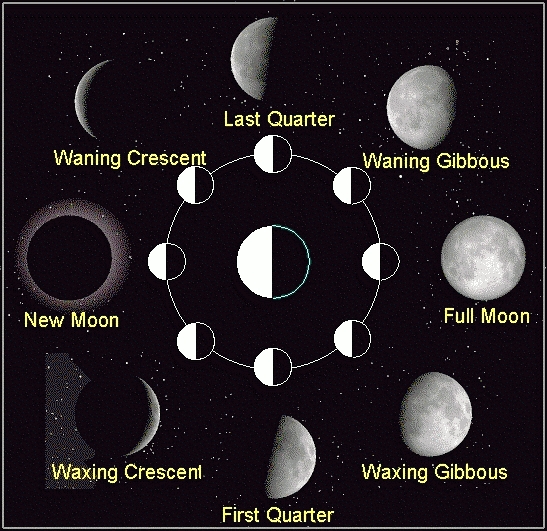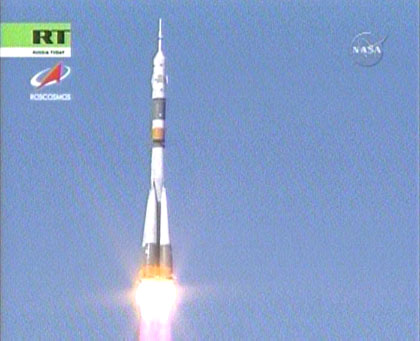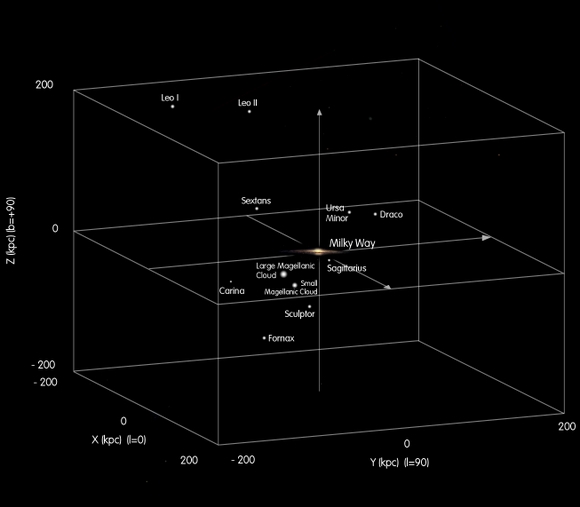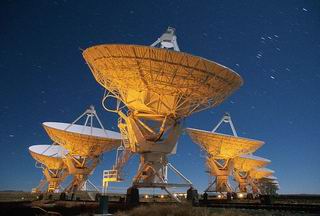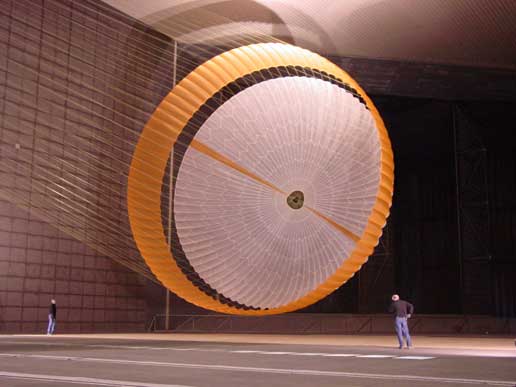After all the excitement about last week’s successful docking of the European ATV “Jules Verne”, it’s time to spare a thought for its Russian predecessor. The Progress 28 module was filled with rubbish and unneeded equipment, quietly severed from its docking bay and steered toward Earth. On Monday at 0850 GMT, the selfless module dropped through the atmosphere, burned and eventually reached the Pacific Ocean, sinking into the satellite graveyard 3000 km east of the New Zealand coast…
On February 5th, a Russian Soyuz rocket launched the Progress 28 cargo ship to the International Space Station (ISS) to ferry supplies to the astronauts in orbit. This mission started a very busy period for space traffic controllers. Soon after Progress 28 was sent on its way, Space Shuttle Atlantis blasted off to take the Columbus module to be installed on the station. Then at the start of this month, ESA’s Automated Transfer Vehicle (ATV) sat patiently in an orbital holding pattern until the shuttle undocked and flew back to Earth. Then on April 3rd, the ATV carried out a flawless approach and docking procedure with the ISS.
Watching over all this action on the station was the Progress 28 module attached patiently to the Russian-built Pirs docking compartment. After astronauts had salvaged reusable parts from the Progress module and filled it full of trash, the time came on April 7th to say Spokojnoj Nochi (Russian for “Good Night”) to the ill-fated supply ship to make room for the two Russians and one South Korean to arrive after the Soyuz launch yesterday.
Dropping supply modules into the Pacific may sound unsavoury, but it remains the only viable option to dispose of rubbish and unwanted material when in space. Simply jettisoning it into space cannot be done, there must be a controlled disposal, dumping trash into a used module and blasting it into a re-entry trajectory. Littering Earth orbit is a critical problem, so space agencies are doing the best they can to send potential debris to Earth where most of it can burn up in the atmosphere. Anything left over falls into a predetermined “satellite graveyard” in the worlds largest ocean.
Some interesting objects have been dropped from the station into the atmosphere. To mention the most humorous, in 2006 the Russian crew on board the station stuffed an old spacesuit with rubbish and launched “Ivan Ivanovich” into orbit. Ivan lasted for 216 days and set a lifetime record for ISS space debris. The suit eventually succumbed to gravity and burned up in the atmosphere.
“The drop zone for spaceship fragments, which did not burn in dense layers of the atmosphere, was located away from navigation routes, about 3,000 kilometers east of the New Zealand capital city of Wellington.” – Russia’s Federal Space Agency spokesperson Valery Lyndin.
Don’t think the sparkling new ATV is being let off either, in six months this hi-tech vehicle will be stuffed with garbage and thrown to a fiery death above the Pacific. Sad really…
Source: Space.com, New Scientist

